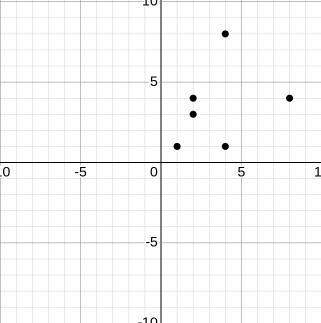
Mathematics, 19.08.2019 01:30 madelein51301
the vertices of δghi are g (2, 4), h (4, 8), and i (8, 4). the vertices of δjkl are j (1, 1), k (2, 3), and l (4, 1). which conclusion is true about the triangles?
a. they are congruent by the definition of congruence in terms of rigid motions.
b. they are similar by the definition of similarity in terms of a dilation.
c. the ratio of their corresponding sides is 1: 3
d. the ratio of their corresponding angles is 1: 3.

Answers: 1


Another question on Mathematics


Mathematics, 22.06.2019 00:30
Use the irregular polygon below. show all work. a. find the perimeter. b. find the area. the angles of the irregular polygon is 2, 8, 8, and 4.
Answers: 2

Mathematics, 22.06.2019 01:30
Which of the following statements is a true conclusion that can be made from the scaled bargraph?
Answers: 1

Mathematics, 22.06.2019 01:50
According to a study done by de anza students, the height for asian adult males is normally distributed with an average of 66 inches and a standard deviation of 2.5 inches. suppose one asian adult male is randomly chosen. let x = height of the individual. a) give the distribution of x. x ~ b) find the probability that the person is between 64 and 69 inches. write the probability statement. what is the probability?
Answers: 2
You know the right answer?
the vertices of δghi are g (2, 4), h (4, 8), and i (8, 4). the vertices of δjkl are j (1, 1), k (2,...
Questions

Biology, 03.10.2019 11:00

History, 03.10.2019 11:00




Biology, 03.10.2019 11:00




Geography, 03.10.2019 11:00

Computers and Technology, 03.10.2019 11:00

History, 03.10.2019 11:00

Social Studies, 03.10.2019 11:00


Mathematics, 03.10.2019 11:00

Mathematics, 03.10.2019 11:00




Computers and Technology, 03.10.2019 11:00




